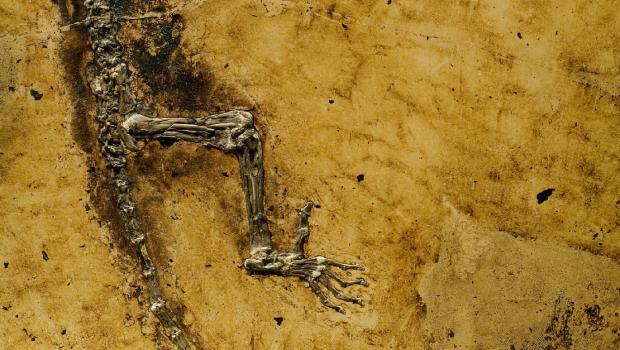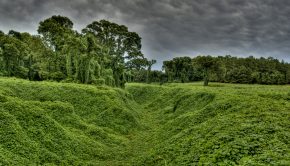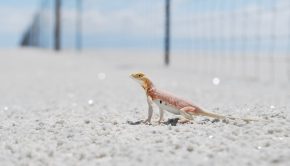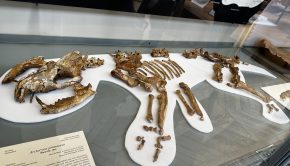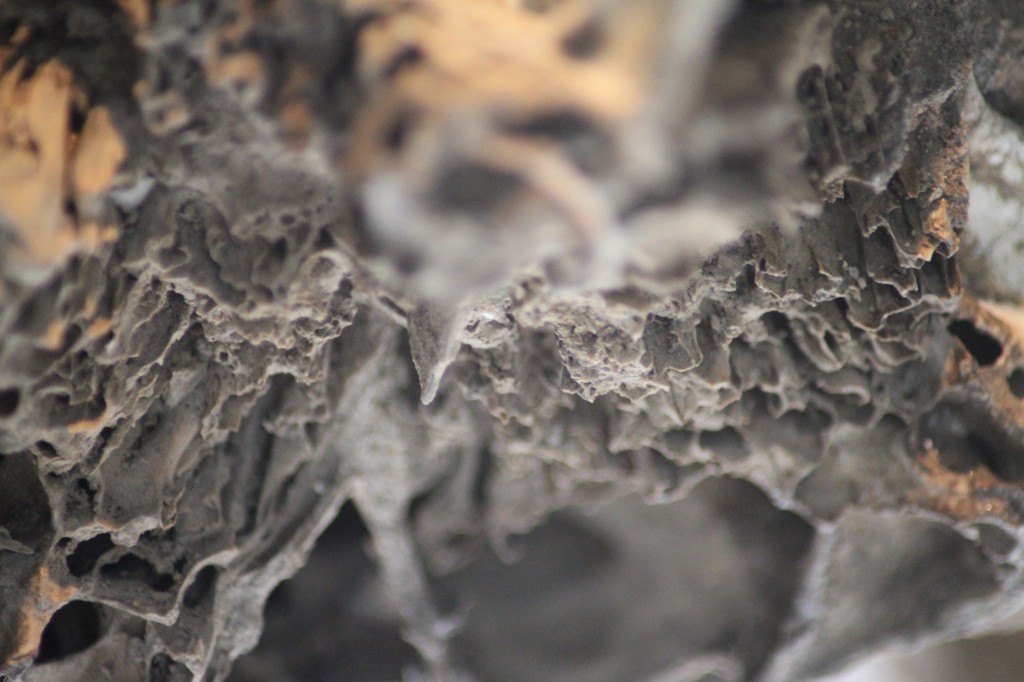Early primate growth history
Primate evolution is something that is heavily debated and not very well understood in palaeontology, but it is still heavily studied. In 2009, an amazing primate fossil was found in Messel, dating to approximately 47 million years ago, and was named Darwinius masillae. Just one single fossil of Darwinius is known, and it is small, complete and very well preserved. The initial description heralded it as some kind of “missing-link” in primate evolution, a transitional form on the branch towards anthropoid primates, including humans. However, studies since then have disagreed with the original classification, placing it on other branches of the primate tree.
A new study looking at the growth history of Darwinius has revealed new details about the tooth eruption pattern and the position of the fossil within primates. The lead author of the study, Sergi López-Torres is a PhD student at the University of Toronto, and he gave us a short description of the study:
“Adapoids were medium-sized, arboreal primates, widespread throughout the Europe, Asia, Africa, and North America, ranging in time between 55.8 and 9 million years ago. They belong to a quite successful radiation of primates, making up 6 families and more than 100 species. The evolutionary relationships of adapoids to modern groups of primates have received considerable attention in the scientific literature for over a century. Jacob Wortman first suggested in 1904 that adapoids were closely related to anthropoids (the group that includes monkeys, apes, and humans), now known as the Adapoid-Anthropoid Hypothesis. In 1920, William Gregory contrarily proposed that adapoid primates were instead more closely related to strepsirrhines (the group that includes lemurs and lorises), known as the Adapoid-Strepsirrhine Hypothesis.
While the Adapoid-Strepsirrhine Hypothesis has been more broadly accepted for the past two decades, the description of the juvenile adapoid Darwinius masillae (nicknamed “Ida”) in 2009 revived the controversy. Its describers suggested a closer relationship to haplorhines (the group that includes tarsiers and anthropoids), and later to anthropoids specifically.
A less broadly discussed topic is the growth model used to predict Ida’s age at death and her final adult body mass. Until now, the only proposed model of growth and development for Darwinius was based on a living anthropoid primate, the squirrel monkey (Saimiri sciureus), a model in line with the Adapoid-Anthropoid Hypothesis. However, the recent findings suggest that the dental eruption sequence (i.e. the order in which the teeth come in) of Darwinius shares similarities with three major primate ancestors (the strepsirrhine ancestor, the haplorhine ancestor, and the ancestor to all primates), but shows a major difference from the anthropoid ancestor. Anthropoids erupt the third molar very late in the sequence, and Darwinius does not, a characteristic seen in lemurs. This led to the proposal of a new, alternative model based on lemurs (Eulemur and Varecia). The new model suggests an older age at death for “Ida” (1.05-1.14 years) and a smaller reconstructed adult weight (622-642g).
Although the eruption sequence data cannot disprove the Adapoid-Anthropoid Hypothesis, they are less consistent with that idea than with the Adapoid-Strepsirrhine Hypothesis. With respect to future discoveries, this new model provides an alternative approach for estimating life history parameters more in keeping with the consensus view of adapoid relationships.”
The paper is free to access, published in Royal Society Open Science, so check it out!
Image caption: Darwinius masillae fossil (image from Franzen et al. 2009).
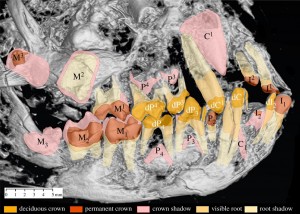
Radiograph of the right side of skull of Darwinius masillae showing the deciduous (indicated with a ‘d’) and permanent teeth. Image from López-Torres et al. 2015

